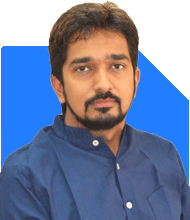Ramalingam Kalirajan |10902 Answers |Ask -Follow
Mutual Funds, Financial Planning Expert - Answered on Jun 21, 2024
He has an MBA in finance from the University of Madras and is a certified financial planner.
He is the director and chief financial planner at Holistic Investment, a Chennai-based firm that offers financial planning and wealth management advice.... more

I have retired from service 2 years back, I have 15000000 in MF, 12000000 in bank FD, 6500000 in savings account and 5000000 in sr citizen savings scheme. I draw rs 85000 as pension every month. How I can earn rs 250000 every month after 3 years. I have no liability and I reside in my own house
Compliments and Encouragement
You’ve done an excellent job securing your retirement. Your diversified portfolio and thoughtful planning reflect your diligence and foresight. This is a great foundation to build on for your future financial goals.
Analyzing Your Current Income and Assets
Monthly Pension
Your current monthly pension is Rs 85,000. This is a stable and reliable source of income.
Mutual Funds
You have Rs 1.5 crore invested in mutual funds. These can potentially offer higher returns, especially if well-diversified and managed actively.
Fixed Deposits
Rs 1.2 crore in fixed deposits provides safety and liquidity but generally offers lower returns compared to mutual funds.
Savings Account
You have Rs 65 lakhs in a savings account. This amount should be managed effectively to earn better returns while maintaining liquidity for emergencies.
Senior Citizen Savings Scheme
The Rs 50 lakhs in the Senior Citizen Savings Scheme offers a steady interest income, which is beneficial for retirees.
Setting a Goal: Achieving Rs 2,50,000 Monthly Income
To achieve Rs 2,50,000 monthly, we need to bridge the gap between your current pension of Rs 85,000 and the target amount. This requires generating an additional Rs 1,65,000 per month.
Creating a Comprehensive Investment Strategy
Systematic Withdrawal Plans (SWPs)
Mutual funds can be structured to provide a steady income through SWPs. You can withdraw a fixed amount regularly, offering liquidity and flexibility. Considering your mutual fund corpus, SWPs can be a significant part of your strategy.
Monthly Income Plans (MIPs)
Consider MIPs that balance between debt and equity. These can provide regular income with moderate risk. They are ideal for retirees seeking stable returns with some growth potential.
Debt Mutual Funds
Debt funds offer stability and regular income with lower risk. They can supplement your monthly income while preserving capital. Allocate a portion of your portfolio to high-quality debt funds.
Balanced Advantage Funds
These funds dynamically manage the allocation between equity and debt based on market conditions. They offer potential for higher returns with controlled risk, making them suitable for generating steady income.
Fixed Deposits and Senior Citizen Savings Scheme
Continue to utilize the interest from FDs and the Senior Citizen Savings Scheme. However, consider re-evaluating the allocation to maximize returns, as these instruments generally offer lower returns.
Optimizing Your Current Investments
Reassess Savings Account Balance
Having Rs 65 lakhs in a savings account is excessive for liquidity needs. Consider moving a substantial portion into higher-yield investments while keeping a sufficient amount for emergencies.
Review Mutual Fund Portfolio
Work with a Certified Financial Planner (CFP) to review your mutual fund portfolio. Ensure it’s diversified across equity, debt, and hybrid funds to optimize returns and manage risks.
Laddering Fixed Deposits
Laddering involves staggering the maturity dates of FDs. This strategy ensures liquidity at regular intervals and captures better interest rates over time. Reinvest matured FDs in higher-yield instruments or structured plans.
Maximizing Tax Efficiency
Tax-Efficient Instruments
Consider tax-efficient instruments to minimize tax liabilities. Utilize the tax benefits under Sections 80C, 80D, and other applicable sections to enhance post-tax returns.
Tax Planning with Mutual Funds
Equity mutual funds held for over a year benefit from long-term capital gains tax rates. Debt funds held for more than three years offer indexation benefits, reducing tax liabilities.
Maintaining an Emergency Fund
An emergency fund covering 6-12 months of expenses is essential. Ensure this fund is easily accessible and invested in liquid or ultra-short-term funds for quick access.
Regular Portfolio Review and Rebalancing
Periodic Reviews
Regularly review your portfolio to ensure it remains aligned with your goals. Market conditions and personal circumstances change, necessitating adjustments.
Rebalancing
Rebalance your portfolio to maintain the desired asset allocation. This involves selling assets that have grown significantly and reinvesting in underperforming assets to keep the portfolio balanced.
Leveraging Professional Guidance
Certified Financial Planner (CFP)
A CFP can provide personalized advice, portfolio reviews, and rebalancing. Their expertise ensures your investments are optimized for your goals.
Monitoring Market Trends
Stay Informed
Keep abreast of market trends but avoid impulsive decisions. Focus on long-term trends and adapt your strategy with the guidance of a CFP.
Educating Yourself
Financial Literacy
Continue educating yourself about financial products and market trends. This empowers you to make informed decisions and enhances your financial planning.
Potential Risks and Mitigation
Market Volatility
Investing in mutual funds and other market-linked instruments involves risk. Diversification and regular reviews help mitigate these risks.
Inflation
Ensure your portfolio grows faster than inflation to maintain purchasing power. Equity and balanced advantage funds typically offer inflation-beating returns.
Generating Additional Income
Part-Time Consulting or Freelancing
If you’re open to it, consider part-time consulting or freelancing in your field. This can supplement your income and keep you engaged.
Planning for Healthcare
Adequate Health Insurance
Ensure you have comprehensive health insurance. Healthcare costs can be significant, and having adequate coverage protects your financial health.
Final Insights
Achieving a monthly income of Rs 2,50,000 is a realistic goal with careful planning. Your diversified portfolio and current assets provide a strong foundation. By strategically investing your savings and optimizing current investments, you can bridge the income gap. Continue working with a Certified Financial Planner to review and rebalance your portfolio regularly. Stay informed and educated to make informed decisions. Your disciplined approach and thoughtful planning will lead to financial success and stability in your retirement years.
Best Regards,
K. Ramalingam, MBA, CFP,
Chief Financial Planner,
www.holisticinvestment.in
You may like to see similar questions and answers below
Dev Ashish | Answer |Ask -Follow
MF Expert, Financial Planner - Answered on Apr 26, 2023
Ramalingam Kalirajan |10902 Answers |Ask -Follow
Mutual Funds, Financial Planning Expert - Answered on Jun 17, 2024
Ramalingam Kalirajan |10902 Answers |Ask -Follow
Mutual Funds, Financial Planning Expert - Answered on Jul 24, 2024
Ramalingam Kalirajan |10902 Answers |Ask -Follow
Mutual Funds, Financial Planning Expert - Answered on Jun 02, 2025
Radheshyam Zanwar |6750 Answers |Ask -Follow
MHT-CET, IIT-JEE, NEET-UG Expert - Answered on Dec 19, 2025
Samraat Jadhav |2514 Answers |Ask -Follow
Stock Market Expert - Answered on Dec 18, 2025
Reetika Sharma |432 Answers |Ask -Follow
Financial Planner, MF and Insurance Expert - Answered on Dec 18, 2025
Reetika Sharma |432 Answers |Ask -Follow
Financial Planner, MF and Insurance Expert - Answered on Dec 18, 2025
Reetika Sharma |432 Answers |Ask -Follow
Financial Planner, MF and Insurance Expert - Answered on Dec 18, 2025
Samraat Jadhav |2514 Answers |Ask -Follow
Stock Market Expert - Answered on Dec 18, 2025

Kanchan Rai |648 Answers |Ask -Follow
Relationships Expert, Mind Coach - Answered on Dec 18, 2025
Kanchan Rai |648 Answers |Ask -Follow
Relationships Expert, Mind Coach - Answered on Dec 18, 2025
Anu Krishna |1754 Answers |Ask -Follow
Relationships Expert, Mind Coach - Answered on Dec 18, 2025
Anu Krishna |1754 Answers |Ask -Follow
Relationships Expert, Mind Coach - Answered on Dec 18, 2025



























